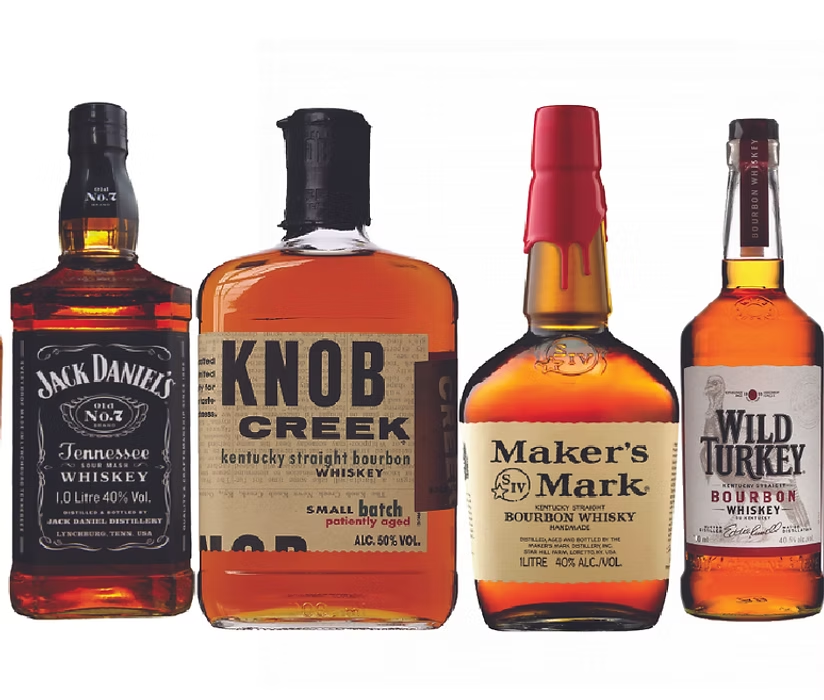Recent developments in the American whiskey industry paint a concerning picture that's reminiscent of historical challenges. Major players are making significant operational changes that could signal broader market troubles, raising questions about the future direction of this iconic spirits category.

Industry Giants Signal Trouble
The last quarter of 2024 brought sobering news from some of the industry's most prominent players. MGP, the Indiana-based distillery known for supplying whiskey to numerous brands, reported a stark 24% year-on-year decline in consolidated sales. Their December announcement of production rollbacks and reduction in aged whiskey stocks marks a significant shift in strategy for a company that has been a cornerstone of American whiskey production.
Even more telling is the January 2025 announcement from Brown-Forman, owner of iconic brands like Jack Daniel's, Old Forester, and Woodford Reserve. Their decision to close their Cooperage and reduce their workforce by 12% following a 5% decline in net sales sends a clear message about the challenges facing even the most established players in the industry.
Historical Echo: The Specter of Another Whiskey Glut
These developments bear an uncomfortable resemblance to the infamous Whiskey Glut of the 1970s and 1980s, a period that led to widespread industry consolidation and the closure of numerous distilleries. Today's statistics are equally concerning: Kentucky alone currently houses an estimated 12 million barrels of ageing whiskey. This massive inventory, combined with shifting consumer preferences, creates a potentially volatile situation for the industry.
Changing Consumer Landscape
There are some key factors that may be contributing to these market pressures:
Generation Z's drinking habits:
The emerging consumer demographic of Generation Z is showing markedly different consumption patterns, with data indicating they're drinking less than previous generations. This shift in behaviour poses a significant challenge for an industry that has traditionally relied on capturing lifetime brand loyalty from young adult consumers.

The premiumisation problem:
While premiumisation has been a successful strategy for many brands, it may be creating an unexpected barrier. At MGP, premium-plus sales within its branded spirits division increased by just 1%, while the mid- and value-priced portfolio saw sharper declines. What was once considered an accessible, everyman's drink is increasingly becoming unattainable for many consumers. This shift risks alienating the very demographic that historically formed the backbone of whiskey consumption.
Silver Linings and New Directions
Despite these challenges, the American whiskey market shows signs of evolution that could present new opportunities:
The Rise of Local Brands
As larger producers face headwinds, there's evidence of growing consumer interest in local and craft distilleries. This shift could represent a fundamental change in the market structure, potentially challenging Kentucky's traditional dominance in the category.
Diversification Beyond Bourbon
Recent developments suggest a broadening of the American whiskey category beyond its bourbon-centric focus. The Tobacco Tax and Trade Bureau's (TTB) new legislation defining "American Single Malt" opens up new possibilities for producers and consumers alike. This expansion is exemplified by high-profile releases like Beyoncé's Sir David Whisky, a 49% malted barley expression that notably eschews the traditional "whiskey" spelling, signalling its alignment with Scotch-style production methods.

Looking Forward
The American whiskey industry appears to be at a crossroads. While traditional market leaders face significant challenges, new opportunities are emerging through changing consumer preferences and regulatory developments. The industry's ability to adapt to these shifts while maintaining its heritage will likely determine its future trajectory.
For brands and industry stakeholders, this period of transition requires careful navigation. Success may lie in finding the balance between maintaining traditional appeal while embracing new trends and consumer preferences. The emergence of American Single Malt as a category and the growing interest in local producers suggest that diversification and authenticity could be key strategies for weathering current market challenges.
Written by: Ryan Prescott, Strategy Consultant
